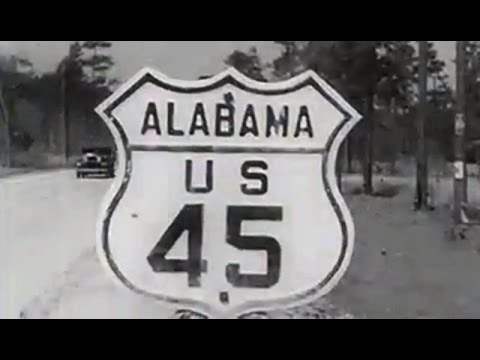more at
Description of Mobile, Alabama in the 1930s, the Gulf coast, and CCC work in the area. Much of the Civilian Conservation Corps construction still stands at Little River State Forest.
Public domain film from the US National Archives, slightly cropped to remove uneven edges, with the aspect ratio corrected, and mild video noise reduction applied.
The soundtrack was also processed with volume normalization, noise reduction, clipping reduction, and/or equalization (the resulting sound, though not perfect, is far less noisy than the original).
Mobile (/moʊˈbiːl/ moh-BEEL) is the county seat of Mobile County, Alabama. The population within the city limits was 195,111 as of the 2010 United States Census, making it the third most populous city in the U.S. state of Alabama, the most populous in Mobile County, and the largest municipality on the Gulf Coast between New Orleans, Louisiana, and St. Petersburg, Florida.
Alabama’s only saltwater port, Mobile is located at the head of the Mobile Bay and the north-central Gulf Coast. The Port of Mobile has always played a key role in the economic health of the city beginning with the city as a key trading center between the French and Native Americans down to its current role as the 12th-largest port in the United States. Mobile is the principal municipality of the Mobile Metropolitan Statistical Area, a region of 412,992 residents which is composed solely of Mobile County and is the third-largest metropolitan statistical area in the state. Mobile is the largest city in the Mobile-Daphne−Fairhope CSA, with a total population of 604,726, the second largest in the state. As of 2011, the population within a 60 mile radius of Mobile is 1,262,907.
Mobile began as the first capital of colonial French Louisiana in 1702. During its first 100 years, Mobile was a colony of France, then Britain, and lastly Spain. Mobile first became a part of the United States of America in 1813, with the annexation of West Florida under President James Madison. It then left that union in 1861 when Alabama joined the Confederate States of America, which collapsed in 1865.
As one of the Gulf Coast’s cultural centers, Mobile has several art museums, a symphony orchestra, a professional opera, a professional ballet company, and a large concentration of historic architecture. Mobile is known for having the oldest organized Carnival celebrations in the United States. The festival began to be celebrated in the first decade of the 18th century, during the city’s French colonial period. Mobile was also host to the first formally organized Carnival mystic society, known elsewhere as a krewe, to celebrate with a parade in the United States, beginning in 1830…
Little River State Forest is an Alabama state forest in the counties of Escambia and Monroe. The forest is approximately 2,100 acres (850 ha) and sits at an elevation of 161 feet (49 m). The forest had its beginnings in the 1930s, when the property was deeded to the state. In 1934, during the Great Depression, the Civilian Conservation Corps (CCC) began work to create a state park at the site. Many current structures date from the CCC period, including the office building, a cabin, pavilions, a nature trail, and a 25-acre (10 ha) lake. The site is managed and maintained by the Alabama Forestry Commission…

